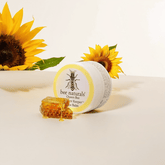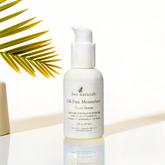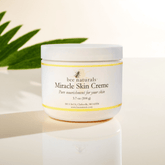Bee Naturals – About Our Naturally Derived Ingredients
BEE NATURALS NATURE DERIVED INGREDIENTS – WHAT DOES THAT MEAN?
I’ve been imploring our customers to read labels for years – to learn about what’s healthy, not so healthy, and everything in between so that they can make educated choices about what products to use and those to avoid. Fortunately, today’s consumer is much savvier and demands to understand what all those unpronounceable ingredients really are and how they might affect their health.
My earliest motto was, ‘if it’s safe enough to eat, it’s safe for the skin’ and that simple philosophy still holds true.
So, with the ‘mainstreaming’ of organic and natural in everything from food to personal care products to even the fibers used in our clothes, how do we go about understanding what all these terms mean? Natural, Organic, Sustainable, GMO-free, Pesticide-free, Dermatologist Tested, Hypo-Allergenic?
Here is our interpretation, which of course, isn’t the authoritative, ‘last word’ on these topics, but we hope it will help provide some clarity.
Natural:
Unfortunately, the term natural is nearly meaningless from a health and safety perspective. There are many of things in our environment that are natural, but not necessarily healthy. For example, ragweed is all-natural, but if you have hay fever, it’s not healthful. Richly marbled steaks taste good, they’re ‘natural’ meat, but for those with high cholesterol and triglycerides, not a portion of food in which to indulge (unless it’s grass-fed, free-range, drug-free beef, which is a whole other story).
For our purposes let’s look at it this way- I’m shopping for a facial moisturizer and I narrow down my choices to two products. The first label has an ingredient disclosure that contains the following ingredients:
#1 Purified water, olive oil, grapeseed oil, vegetable glycerin, honey, beeswax, cetyl alcohol, polysorbate 60, vitamin E (tocopheryl acetate), phenoxyethanol, potassium sorbate, and essential oils of lavender and rose centifolia.
The second label states:
#2 Purified water, glycerin, stearic acid, glycol stearate, glyceryl stearate, triethanolamine, isopropyl palmitate, cetyl alcohol, dimethicone, petrolatum, magnesium aluminum cilicate, fragrance, DMDM hydantoin, carbomer, disodium EDTA, methylparaben, iodopropynyl butylcarbamate, stearamide AMP, tocopheryl acetate, retinyl palmitate, leianthus annuus (sunflower) seed oil and titanium dioxide.
This example is fairly obvious, but what exactly is all this stuff? In the next edition, we’ll provide a glossary of ingredients as well as a site you can use for reference for the relative toxicity of each, so you can decide for yourself.
Essentially, the term all-natural has come to mean nothing more than non-manmade but tends to include ingredients that are derived in a natural way via manmade methods.
Organic:
This term refers to naturals ingredients that have been raised or grown without the use of pesticides, which is good.







Leave a comment
Please note, comments need to be approved before they are published.